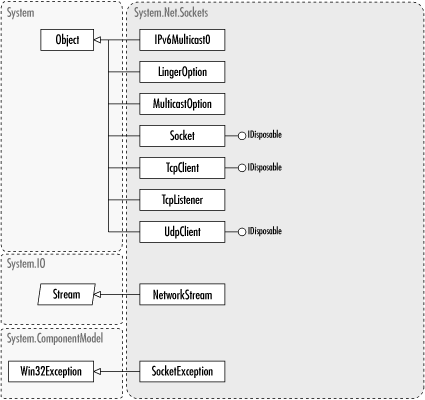| [ Team LiB ] |
|
Chapter 34. System.Net.SocketsThe System.Net.Sockets namespace classes implement standard Berkeley sockets APIs for cross-process/cross-host communication. Sockets are low-level objects (abstractions, really) that provide the foundation for most Internet networking. A socket binds to a local address and port, and either waits for a connection from a remote address or connects to a remote address and exchanges data across the network. Two socket implementations are made available in this namespace, TCP/IP and UDP/IP. Most Internet applications, such as FTP clients and web browsers, are built upon socket connections. Although many system-level programmers feel a close kinship with these types, .NET programmers are greatly encouraged to consider using higher-level constructs, such as HTTP (see the System.Net namespace) or the System.Runtime.Remoting types, to facilitate remote communications. If you need to work at the socket level, consider using TcpClient or TcpListener. These are high-level abstractions of the socket API that support client and server functionality. For more details regarding many of the options mentioned in this namespace, consult a low-level sockets reference, such as W. Richard Stevens' Network Programming in the Unix Environment (Volumes 1 and 2) or TCP/IP Illustrated (Volumes 1, 2, and 3). Although the books were written for a Unix environment, .NET faithfully mirrors much, if not all, of the Berkeley sockets API (which originally came from Unix). Figure 34-1 shows the types in this namespace. Figure 34-1. The System.Net.Sockets namespace |
| [ Team LiB ] |
|